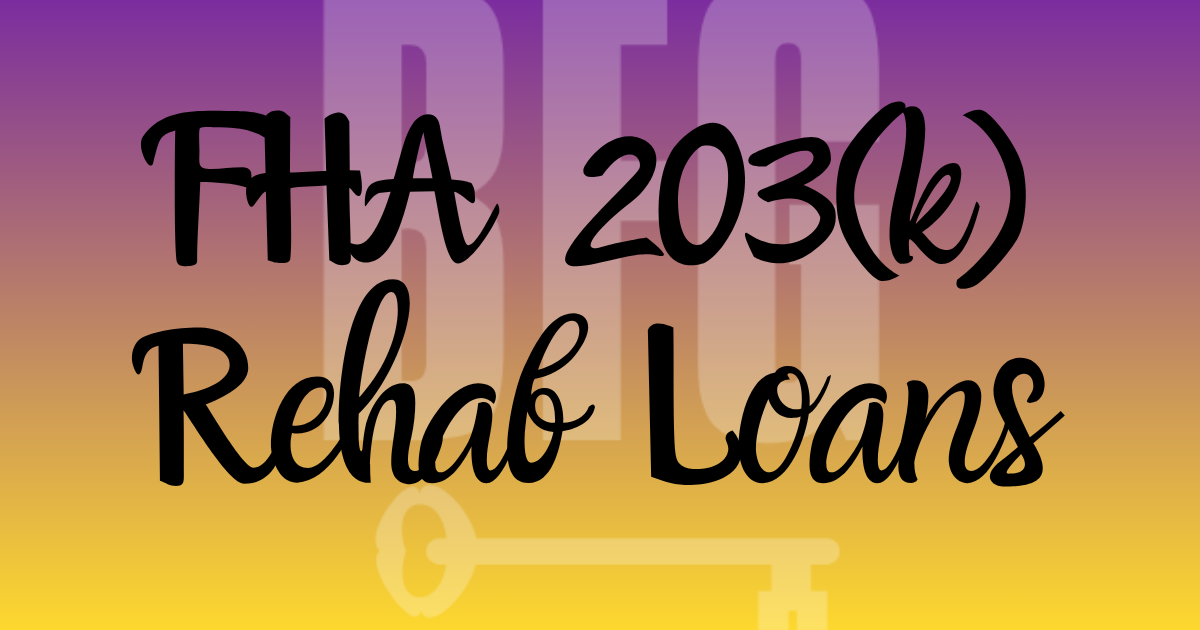Buying a home that needs work? An FHA 203(k) loan might be your golden ticket.
This renovation-friendly loan lets you roll the cost of repairs and upgrades into your mortgage—making it easier to buy a home with potential and turn it into something amazing.
Whether you’re restoring a historic adobe in Trinidad, upgrading a cabin near Pagosa, or modernizing a house in Walsenburg that just needs a little love—knowing what’s eligible (and what’s not) can save you a ton of time and frustration.
Let’s break it down.
✅ What You Can Do with an FHA 203(k) Loan
The 203(k) program is all about making homes safer, more livable, and more valuable. Here are the most common upgrades that typically qualify:
🧱 Structural Repairs & Additions
-
Foundation or framing fixes
-
Finishing attics or basements
-
Expanding rooms or adding square footage
🚗 Garage Work
-
Build a new garage
-
Repair or expand an existing one
⚠️ Safety & Health Upgrades
-
Fix code violations or safety issues
-
Address mold, lead paint, or faulty wiring
-
Eliminate hazards that would flag a traditional FHA appraisal
🚿 Essential Systems
-
Repair or replace HVAC, electrical, plumbing, or septic systems
-
Install or upgrade wells and water access
🛁 Kitchens & Bathrooms
-
Upgrade functionality, flow, and finishes
-
Add modern appliances or accessibility features
🏠 Exterior Improvements
-
Replace roofing, gutters, and downspouts
-
Repaint siding or repair the porch
🌿 Energy Efficiency
-
Install insulation
-
Replace old windows with energy-efficient versions
-
Upgrade to energy-saving appliances
♿ Accessibility
-
Add ramps, widen doorways, or install accessible bathrooms
🚧 Outdoor Basics
-
Repair fences, walkways, and driveways
-
Improve drainage or site stability
🧺 Built-In Appliances
-
Dishwasher, stove, washer/dryer—if they’re built-in, they’re often eligible
If the improvement adds permanent value and makes the home more livable, there’s a good chance it qualifies.
🚫 What You Can’t Do with an FHA 203(k) Loan
While 203(k) loans are flexible, there are clear limits to keep the program focused on essential, not extravagant, improvements.
Here’s what’s usually not allowed:
🏊♂️ Luxury Items
-
Swimming pools, hot tubs, spas, saunas
-
Outdoor fireplaces or fire pits
-
Wet bars or wine cellars
🏕️ Temporary Additions
-
Satellite dishes
-
Detached grills or BBQ pits
-
Portable sheds or carports
🏢 Commercial Use
-
Converting residential space into a business
-
Renovations meant for rental income or storefronts
🛝 Recreational Upgrades
-
Tennis courts, sports courts, treehouses
-
Gazebos or bathhouses
🖼️ Aesthetic Extras
-
Photo murals or “statement” landscaping
-
Tree work (unless the tree is a hazard)
Bottom line: If it’s non-essential, non-permanent, or purely for fun, it’s probably a no-go.
🛑 Quick Note: Local Rules Still Matter
Even if the FHA says “yes,” your lender, inspector, or local building department might say “not yet.”
Before jumping in, make sure to:
-
Review local code requirements
-
Talk with your lender about their 203(k) process
-
Work with a real estate agent who knows what qualifies and what to avoid (that’s us!)
💡 Why This Matters for Colorado Buyers
We see a lot of buyers fall in love with homes that need just a little (or a lot) of TLC.
The FHA 203(k) program can be the difference between walking away and making it work.
If you’re looking at:
-
Older homes with character (and quirks)
-
Affordable properties in need of repair
-
Places with potential that traditional loans won’t touch
…then 203(k) might be the tool that gets you across the finish line.
🎯 Big Frontier Group Knows How to Help
We’ve walked clients through fixer-uppers, full-gut rehabs, and everything in between.
We’ll help you:
-
Spot eligible properties
-
Understand how financing works
-
Avoid pitfalls that delay closing
-
Coordinate inspections, bids, and lender requirements
📬 Got Questions About 203(k) Loans?
We’re happy to help you plan, prep, and move forward with confidence.

